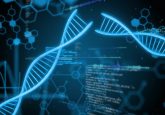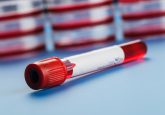Ask the Expert on Microsampling ¦Tim Sangster (Charles River)

Tim Sangster is a well traveled bioanalytical chemist, having worked in Scotland, Italy, England, America and finally back to Scotland to head up the Bioanalysis and Immunology Department for Charles River, Edinburgh six years ago. During his travels he has gained experience in both CROs and Pharma supporting drug development from a bioanalytical perspective from Discovery through to market. Currently Tim’s main scientific focus is in the use of microsampling to reduce and refine toxicology study designs as well as applying it to other application areas and also the use of LC-MS in the analysis of macromolecules.
In this ‘Ask the Expert’ feature we will be discussing recent developments in microsampling with some of the leading experts in the field. We will discuss the various microsampling techniques including advantages and challenges faced by bioanalysts when applying these methods.
In the installment Tim Sangster, a bioanalytical chemist at Charles River shares with us his thoughts on advances in the field, and some of the recent developments.
Microsampling techniques (DBS, capillary and liquid microsampling) have gained growing interest over
the last couple of years – do you think these advances continue to draw in interest?
The growth is definitely continuing. The focus has currently shifted from dry samples (DBS) and clinical to liquid microsampling and preclinical. Nowadays, the majority of companies are considering microsampling in the discovery phases and most of these are now looking to implement it into their regulated work flows. This year there is an NC3RS meeting focused on microsampling in the academic space in London (UK) on 5 July and the CPSA meeting, 26t–29 September in Langhorne, PA (USA), will have a focus on microsampling.
You can read more about these events here:
www.nc3rs.org.uk/events/2016-workshop-realising-benefits-microsampling-academia
http://www.cpsa-usa.com/2016/index.shtml
One of the historical concerns for many practitioners and regulators was the validation of the bioanalytical methods for analysing samples from microsampling techniques and trusting quantitative data generated from them. To what extent do you think this has this been overcome?
There has been a lot of valuable work done within the community with Astrazeneca and GSK (London, UK) being active in the literature. Concerns were largely not driven by the bioanalytical community: in many cases the concerns have come from the toxicology community. The European Bioanalysis Forum (EBF) community has been driving the acceptance to help remove the preconceptions and facilitate the integration of microsampling into our work flows.
Some companies have decided non-capillary microsampling, both glass and blood capillaries, were not the best approach for sampling and adopted capillary microsampling. Do you agree with this conclusion?
There is no right or wrong answer, the key is to find an approach that meets your work flows and adds value to the drug development process. The work we have done within Charles River Laboratories (MA, USA) was initially focused on the DBS approach. We still continue to do a substantial amount of work using this technique to support work in the agrochemical space where DBS gives us advantages for sampling in a non-laboratory setting. We have also utilized non-capillary microsampling for programs looking for slightly larger volumes (up to 100 μl of blood) using the Sarstedt Microvette® and also using blood mixed with water to support discovery applications. The work we have done supporting regulated toxicology studies has primarily utilized the capillary microsampling technique developed by Ove Jonsson from Astrazeneca [1].
What benefits do you think capillary microsampling offers over liquid microsampling?
The capillary microsampling offers us the flexibility to take blood samples as low as 5 μl and then separate these into plasma or serum as required, which is much harder to do with a non-capillary approach. The use of the exact volume sample at the point of collection then gives a much simpler work flow downstream as the sample dilution stage can then happen in the bioanalytical team’s hands at a later date. This does add the requirement to slightly adjust your stability assessments in the bioanalytical laboratory. We have been working recently on taking samples for individual fetuses to demonstrate exposure in a reproductive toxicology study and have managed to generate viable samples for a very small amount of blood, allowing more accurate understanding and interpretation of the data generated.
Some in the bioanalytical community have pointed to sample homogeneity and sample manipulation as being the main concerns in liquid microsampling. To what extent do you agree with this? And is it enough to justify refraining from liquid microsampling?
There is an EBF Consortium working in this space and they are targeted to publish their results later this year. The experience we have is that microsampling and traditional sampling yield the same results, within the variability of the assay. In Charles River we have now run many studies using a variety of microsampling techniques and tested the methodology in many different ways. We have not found any issues related to sample homogeneity or due to the sample manipulation. The assays for capillary microsampling are tested to assess the impact of the capillaries on the quantification and also to demonstrate that the dilution step has no impact on the assay. The key again is good scientific rigour and I have yet to see any data demonstrating that there is a real concern in this space.
What have been the most exciting developments in microsampling techniques in recent years and where might the technology be developing in the future?
I think the developments in microsampling are only now starting to evolve. The capillary approach, described by Ove Jonsson [1],and DBS [2]have both utilised consumable materials that have been around a long time. Now, with the advent of Mitra™ and the newer devices like Shimadzu’s MSW2, we are starting to see the innovation starting to grow as the acceptance of microsampling grows.
I firmly believe that microsampling will become the standard technique for the majority of preclinical research. In the clinical space where sample volume is not as critical a parameter, it will find its niche e.g. pediatric and geriatric populations. Solid sampling, micro or not, will be massively beneficial in areas such as therapeutic drug monitoring.
What do you think remains the greatest challenge to microsampling?
Resistance to change and gaining full acceptance that microsampling should be the default – we should justify not using microsampling. Once we have the acceptance that microsampling should always be used then we need to remove completely the use of satellite groups for exposure assessments.
But I don’t think this is an entirely unresolvable issue. There is a lot of activity going on to overcome the resistance and concerns over microsampling. As more companies realise the advantages then the momentum will continue to grow.
It has been broadly recognised that DBS microsampling presented a number of challenges for the generation of quantitative bioanalytical data. Do you think this has changed- what main challenges remain with DBS?
DBS is a very valuable tool and will continue to be investigated due to the advantages in a non-laboratory setting, be that clinic or a field. The main challenges appear to be related to the sample drying process. It is very hard to control or characterize that aspect of the sample handling for dried matrices and it is chiefly that which makes liquid microsampling the preferred technique for routine applications.
How do you see microsampling techniques evolving over the next 5–10 years? What challenges do you think will remain or appear?
The main challenge is full acceptance so that microsampling becomes the default approach for preclinical safety testing. The complete removal of satellite groups is the second challenge, as microsampling is currently primarily focused on exposure measurements, but on a standard study we have a long list of biomarkers that are measured using clinical chemistry analyzers, which are unfortunately not adapted for microsampling. I envisage that over the next 5–10 years we will see a lot of innovation around the sampling technique with new technology being put forward, for example the MSW2 device from Shimadzu (Kyoto, Japan). I hope that in 10 years’ time the whole discussion will be focused on what technique is most appropriate for a given end point and not “should we do microsampling.”
References
- Jonsson O, Villar R, Nilsson L, Eriksson M, Konigsson K. Validation of a bioanalytical method using capillary microsampling of 8 µl plasma samples: application to a toxicokinetic study in mice. Bioanalysis 4(16) 1989–1998 (2012)
- Barfield M, Spooner N, Lad R, Parry S, Fowles S. Application of dried blood spots combined with HPLC-MS/MS for the quantification of acetaminophen in toxicokinetic studies. J. Chromatogr. B 870(1) 32–37 (2008)
Read previous instalments of Ask the Experts on Microsampling featuring Craig Audler (Supelco/Sigma-Aldrich), Christopher James (AMGen, Inc.) and Stuart Kushon (Neoteryx) here.






